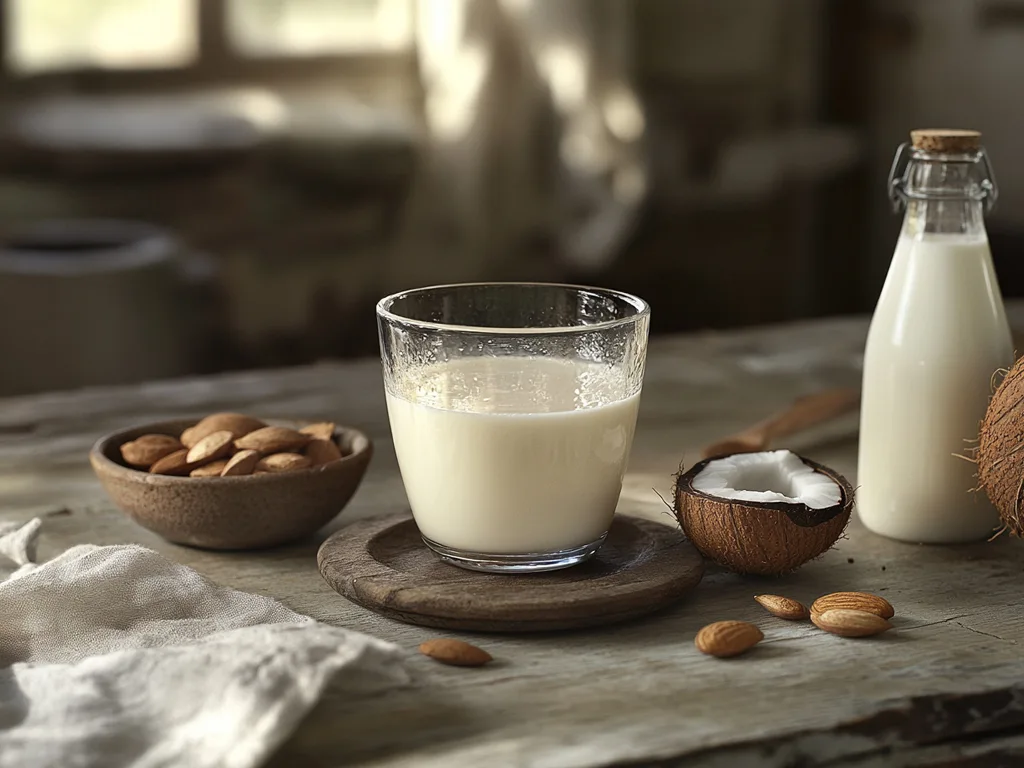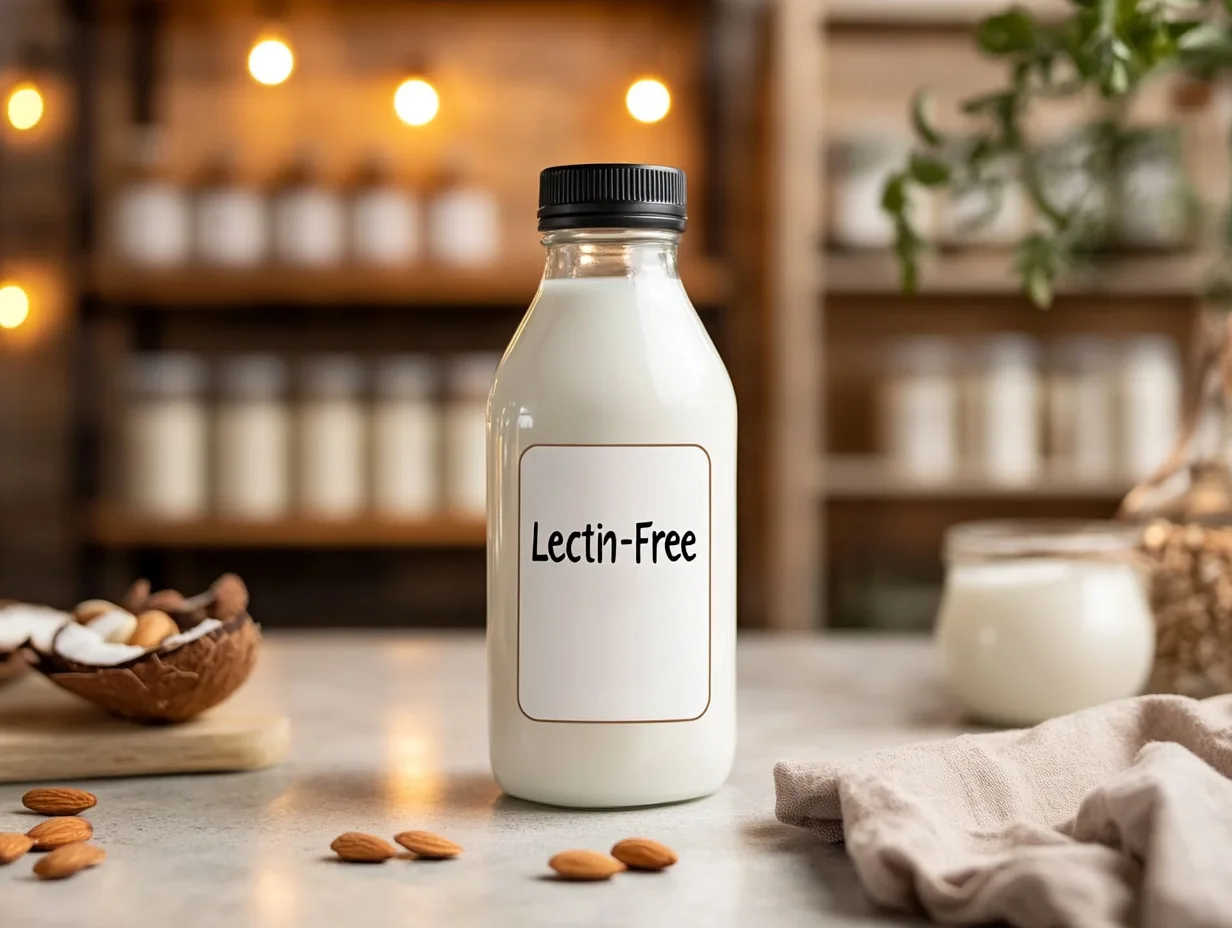In recent years, dietary trends and health-conscious individuals have increasingly focused on understanding the components of the food they consume. One of the topics gaining attention is lectins, naturally occurring proteins found in various foods. But how do lectins relate to milk, and what should you know about choosing the right milk for your diet? This article dives deep into the topic of lectins, particularly in the context of milk, to help you make informed decisions for your health. For those wondering What milk has no lectin., this guide provides clarity and actionable insights.
Milk is a staple in many diets around the world, cherished for its rich nutritional profile. However, with emerging awareness about lectins and their potential effects on the body, it’s natural to question whether your choice of milk aligns with a lectin-free lifestyle.
By understanding what lectins are, where they are commonly found, and how they can affect your health, you’ll be better equipped to identify lectin-free options, such as trying this lectin free fish and chips recipe.
Table of Contents
Understanding Lectins: An Overview
Lectins are a type of protein that bind to carbohydrates and play a role in various biological processes. They are found in almost all plants and animals but are particularly abundant in certain foods. While they serve important functions in nature, such as providing defense mechanisms for plants, lectins can pose challenges when consumed by humans in large amounts.
When consumed in excess or from specific sources, lectins can interfere with nutrient absorption and may even contribute to digestive discomfort. Not all lectins are harmful, and some are even neutralized through cooking or fermentation. However, identifying foods and beverages with high lectin content is crucial for individuals aiming to reduce their intake.
What Are Lectins and Their Impact on Health?
Lectins have a complex relationship with human health. On one hand, they are involved in biological signaling and immune responses. On the other, certain types of lectins, such as those found in raw legumes or grains, can be difficult to digest and may lead to gastrointestinal issues. In some cases, they’ve been linked to increased gut permeability, often referred to as “leaky gut syndrome.”
For individuals with autoimmune conditions or food sensitivities, lectins may exacerbate inflammation or trigger adverse reactions. It’s important to note, however, that not all lectins are harmful, and many become less potent when foods are cooked, soaked, or fermented. Understanding their potential risks helps in making informed dietary choices, particularly for those seeking lectin-free alternatives.
Common Foods Containing Lectins
Lectins are prevalent in a wide range of foods, especially those derived from plants. Common sources include:
- Legumes: Beans, lentils, chickpeas, and peanuts are known for their high lectin content.
- Grains: Wheat, barley, and rice also contain lectins, particularly in their outer layers.
- Nightshade Vegetables: Tomatoes, potatoes, and eggplants are well-known sources.
- Dairy Products: Depending on the diet of the animal, milk and other dairy products may contain traces of lectins.
While many of these foods offer valuable nutrients, their lectin content may be a concern for individuals on a lectin-restricted diet. Processing methods like soaking, sprouting, and cooking can significantly reduce the lectin levels in these foods.
Why Avoid Lectins?
Avoiding lectins may benefit individuals with specific health concerns, such as autoimmune diseases, irritable bowel syndrome (IBS), or sensitivities to certain plant-based foods. Lectins, in their active form, can bind to cell membranes and interfere with normal digestive processes. This can lead to symptoms like bloating, gas, and even nutrient deficiencies.
For those aiming to improve gut health or reduce inflammation, limiting lectin intake could be a game-changer. Additionally, avoiding lectins can help alleviate food sensitivities and support better digestion overall. Choosing lectin-free or low-lectin foods, including milk options, is a practical step toward achieving these health goals.
The Role of Milk in a Lectin-Free Diet

Milk is a versatile and widely consumed beverage, celebrated for its nutritional value and culinary uses. However, in the context of a lectin-free diet, it’s essential to scrutinize milk’s potential lectin content and understand how to choose suitable options. The presence of lectins in milk primarily depends on the diet of the animal and the type of milk being considered. For individuals aiming to minimize lectin intake, knowing how milk can contain lectins and identifying lectin-free varieties is a crucial step.
How Milk Can Contain Lectins
Lectins in milk are not inherent to the liquid itself but are often influenced by the animal’s feed. Animals consuming a grain-heavy diet, especially those fed corn or soy, are more likely to produce milk containing trace lectins. This is because lectins from the feed can pass into the milk through the animal’s digestive and metabolic processes.
Another factor influencing lectin presence is the processing method. Pasteurization and fermentation can reduce certain compounds, but they don’t necessarily eliminate lectins completely. As a result, consumers should pay attention to the source and type of milk to ensure it aligns with their dietary goals.
To minimize lectin exposure, consider selecting milk from grass-fed animals or opting for plant-based milk alternatives that are naturally lectin-free or processed to remove lectins. Understanding these factors can help ensure your milk choice supports a lectin-free lifestyle.
The Nutritional Profile of Milk Without Lectins
Milk without lectins retains many of its desirable nutritional qualities, making it a valuable part of a balanced diet. Key nutrients found in lectin-free milk include:
- Calcium: Essential for strong bones and teeth.
- Protein: Supports muscle repair and overall body function.
- Vitamins: Particularly vitamin D and B12, which aid in immune health and energy production.
- Healthy Fats: Contribute to energy and nutrient absorption.
When comparing lectin-free milk options, it’s essential to assess the nutrient content of different types. Grass-fed cow’s milk, for instance, often contains higher levels of omega-3 fatty acids and antioxidants than milk from grain-fed cows. Similarly, some plant-based milks, such as almond or coconut milk, offer unique nutrients like vitamin E and medium-chain triglycerides (MCTs), which can support overall health.
By selecting lectin-free milk options, individuals can enjoy the nutritional benefits of milk without compromising their commitment to a lectin-free diet. This approach allows for better digestion, reduced inflammation, and enhanced nutrient absorption, creating a foundation for improved overall health.
Types of Milk and Their Lectin Content

Milk comes in various forms, each with distinct nutritional profiles and varying levels of lectins. When following a lectin-free diet, understanding the differences between animal-based and plant-based milks is essential. This section explores the lectin content in various types of milk to help you make informed choices.
Animal-Based Milks: Which Ones Are Lectin-Free?
Animal-based milks are a common dietary staple, but their lectin content largely depends on the feeding practices of the livestock. Let’s examine some of the most popular types:
Cow’s Milk: Risks and Alternatives
Cow’s milk is a rich source of calcium, protein, and other essential nutrients. However, its lectin content is influenced by the cow’s diet. Grain-fed cows produce milk that may contain traces of lectins derived from corn or soy feed. For individuals aiming to avoid lectins, this poses a potential issue.
Fortunately, alternatives exist. Grass-fed cow’s milk is a better option, as it is less likely to contain lectins due to the cow’s natural diet. Organic milk also tends to be a safer choice since it is produced without genetically modified feed. Those with sensitivities to cow’s milk lectins may consider other animal-based or plant-based options.
Goat’s Milk: A Safer Choice?
Goat’s milk is often touted as a healthier and potentially lectin-free alternative to cow’s milk. Goats are more likely to be raised on forage-based diets, reducing the likelihood of lectin contamination. Additionally, goat’s milk is easier to digest for many individuals due to its smaller fat globules and higher levels of beneficial fatty acids.
While goat’s milk is not entirely lectin-free, it remains a favorable option for those seeking to minimize their intake. Opting for grass-fed or organic goat’s milk can further reduce any concerns about lectin exposure.
Plant-Based Milks and Lectins
Plant-based milks have gained popularity among health-conscious consumers, particularly for those adhering to specific dietary restrictions. However, not all plant-based milks are created equal in terms of lectin content.
Almond Milk: Low-Lectin or Lectin-Free?
Almond milk is often recommended as a low-lectin option. Almonds themselves are naturally low in lectins, especially when they are blanched to remove their skins. This makes almond milk a viable choice for a lectin-free diet, provided it’s unsweetened and free from unnecessary additives.
Coconut Milk: An Optimal Choice?
Coconut milk is another excellent option for those avoiding lectins. Derived from the white flesh of coconuts, this milk alternative is naturally lectin-free. It also boasts unique health benefits, including medium-chain triglycerides (MCTs) that support energy and metabolism.
When selecting coconut milk, opt for unsweetened versions without added thickeners or emulsifiers to maintain its lectin-free status.
Other Popular Plant-Based Milks
Other plant-based milks, such as rice milk, oat milk, and soy milk, may contain higher levels of lectins. Rice and oats are naturally high in lectins, while soybeans are among the most lectin-dense legumes. These options may not be ideal for individuals on a lectin-free diet. Alternatives like hemp milk or cashew milk (made from soaked and blanched nuts) may provide better choices, depending on individual preferences and dietary needs.
Fermented Milks: Do They Reduce Lectins?
Fermented milks, such as kefir and yogurt, offer unique benefits due to their probiotic content. Fermentation can partially break down lectins, making these options potentially safer for individuals sensitive to lectins. However, the degree to which fermentation reduces lectins varies depending on the process and the original lectin content.
To ensure the best results, choose high-quality fermented milks made from grass-fed or organic sources. Unsweetened varieties with minimal additives provide the greatest health benefits while supporting a lectin-free lifestyle.
By understanding the lectin content in different types of milk, you can make better dietary choices that align with your health goals. Whether you prefer animal-based or plant-based options, selecting lectin-free or low-lectin varieties ensures that milk remains a nutritious and beneficial part of your diet.
How to Identify Lectin-Free Milk

Choosing lectin-free milk requires a keen understanding of labels, certifications, and farming practices. By knowing what to look for, you can ensure your milk choice aligns with your dietary goals while supporting optimal health. This section provides practical advice for identifying milk varieties that meet lectin-free standards.
Reading Labels and Certifications
Labels are a crucial resource when selecting lectin-free milk. They provide insight into the product’s origin, production methods, and ingredients. Here’s what to focus on:
- Grass-Fed Labels: Milk labeled as “grass-fed” indicates that the animal’s diet primarily consisted of grass rather than grains. Since lectins are commonly derived from grain-based feeds, grass-fed milk is a safer option.
- Organic Certifications: Organic milk must meet strict guidelines that often include the exclusion of genetically modified organisms (GMOs) and synthetic chemicals. Organic farming practices typically result in milk with fewer traces of lectins.
- Additive-Free Statements: Avoid milk products with added thickeners, stabilizers, or emulsifiers, which may introduce unexpected sources of lectins. Look for clean labels with minimal ingredients.
- Non-GMO Verification: Non-GMO certifications indicate that the feed used for the animals did not contain genetically modified grains, further reducing the risk of lectin contamination.
By taking the time to carefully review product labels and seek out these certifications, you can confidently select milk that aligns with a lectin-free lifestyle.
Organic and Grass-Fed Milk: Are They Better?
Organic and grass-fed milks are often touted as superior options for those seeking lectin-free products. But are they truly better? Let’s break it down:
- Grass-Fed Milk: Cows raised on a grass-fed diet consume little to no grains, which significantly minimizes the presence of lectins in their milk. Grass-fed milk is also rich in omega-3 fatty acids, conjugated linoleic acid (CLA), and other beneficial nutrients, making it a wholesome choice.
- Organic Milk: Organic farming practices avoid synthetic pesticides, antibiotics, and GMOs. While not all organic milk is grass-fed, organic certification ensures that the animals are treated humanely and fed a diet free from potentially harmful chemicals. This can contribute to lower lectin levels, particularly when paired with grass-fed practices.
- Combination Benefits: Milk that is both organic and grass-fed provides the best of both worlds. It ensures high nutritional quality while minimizing the risk of lectin contamination, making it an ideal choice for health-conscious consumers.
Although these options may come at a premium price, their benefits—from reduced lectin exposure to superior nutritional content—make them worthwhile investments for those prioritizing health. By understanding the value of organic and grass-fed labels, you can make informed decisions that align with your dietary preferences and needs.
Benefits of Switching to Lectin-Free Milk
Choosing lectin-free milk offers a range of health advantages that extend beyond its compatibility with a specialized diet. From better digestion to reduced inflammation, making this switch can significantly enhance your well-being. Let’s explore the key benefits in detail.
Improved Digestive Health
Lectins, particularly in high amounts, can irritate the digestive system by binding to the gut lining and disrupting its normal function. This irritation may lead to symptoms like bloating, gas, or discomfort in sensitive individuals. By switching to lectin-free milk, you can alleviate these issues and promote better gut health.
Additionally, lectin-free milk often comes from sources that are easier for the body to digest. For example, goat’s milk, a popular lectin-free option, contains smaller fat globules and less lactose than cow’s milk, making it gentler on the stomach. Plant-based options like almond or coconut milk are also inherently free of lactose, further supporting digestive comfort for those with sensitivities.
Enhanced Nutritional Benefits
Lectin-free milk retains its essential nutrients while eliminating potential irritants. Grass-fed and organic options, in particular, are rich in:
- Calcium: Strengthens bones and teeth.
- Protein: Supports muscle development and repair.
- Omega-3 Fatty Acids: Promotes heart health and brain function.
- Vitamins: Such as vitamin D, which enhances calcium absorption, and B vitamins that support energy production.
Plant-based lectin-free milks often offer additional nutrients unique to their source. For instance, almond milk is high in vitamin E, a powerful antioxidant, while coconut milk contains medium-chain triglycerides (MCTs), known for their energy-boosting properties. These nutritional profiles make lectin-free milk a valuable addition to a balanced diet.
Reduced Inflammation Risks
One of the most significant benefits of lectin-free milk is its potential to reduce inflammation in the body. Lectins can trigger inflammatory responses in some individuals, particularly those with autoimmune conditions or sensitivities. Chronic inflammation is linked to numerous health issues, including joint pain, cardiovascular diseases, and metabolic disorders.
By eliminating lectin-rich foods and beverages, you reduce the risk of such inflammatory responses. Lectin-free milk options, such as those derived from grass-fed animals or select plant-based sources, provide the nourishment your body needs without provoking inflammation. This can lead to improved overall health and vitality.
Switching to lectin-free milk is a practical step toward optimizing your diet and supporting long-term well-being. With benefits that encompass digestive comfort, superior nutrition, and reduced inflammation, it’s a choice that pays dividends in health and quality of life.
Frequently Asked Questions
What milk has no lectin?
Milk that is considered lectin-free typically comes from grass-fed animals or is plant-based, such as almond milk or coconut milk. These options avoid lectins associated with grain-fed livestock or high-lectin plant ingredients like soy.
Are all plant-based milks lectin-free?
Not all plant-based milks are lectin-free. While almond and coconut milk are good options, milks derived from soy, oat, or rice often contain higher levels of lectins. It’s crucial to read labels and choose minimally processed varieties.
Can fermentation reduce lectins in milk?
Yes, fermentation can help reduce lectins in milk. Products like kefir and yogurt made from grass-fed or organic sources may contain fewer lectins while offering additional probiotic benefits.
What are the best alternatives to cow’s milk for a lectin-free diet?
Goat’s milk, almond milk, and coconut milk are excellent alternatives for a lectin-free diet. These options are generally lower in lectins and provide essential nutrients without compromising gut health.
Is grass-fed milk always lectin-free?
Grass-fed milk is not entirely lectin-free but contains significantly fewer lectins compared to milk from grain-fed cows. Choosing grass-fed, organic options ensures better nutritional quality and reduced lectin exposure.
What oil do you cook fish and chips in?
The best oils for cooking fish and chips are those with a high smoke point, such as peanut oil, canola oil, or sunflower oil. These oils are stable at high temperatures and ensure a crisp texture while maintaining a neutral flavor. Learn more
Can lectins in milk cause inflammation?
Lectins have been linked to inflammation in sensitive individuals. By choosing lectin-free or low-lectin milk options like grass-fed or plant-based varieties, you can minimize this risk and support overall health.
Conclusion
Understanding What milk has no lectin. and making informed dietary choices can significantly enhance your health and well-being. By identifying and selecting lectin-free milk options, such as grass-fed, organic, or certain plant-based varieties, you can enjoy the benefits of improved digestion, reduced inflammation, and enhanced nutrition. Whether you’re managing a specific health condition or simply seeking to optimize your diet, transitioning to lectin-free milk is a practical and rewarding decision.
As you explore the world of lectin-free products, remember the importance of reading labels, verifying certifications, and opting for high-quality options that align with your health goals. A lectin-free lifestyle doesn’t mean sacrificing flavor or nutrition—it’s about making smarter choices for a healthier, happier you.






